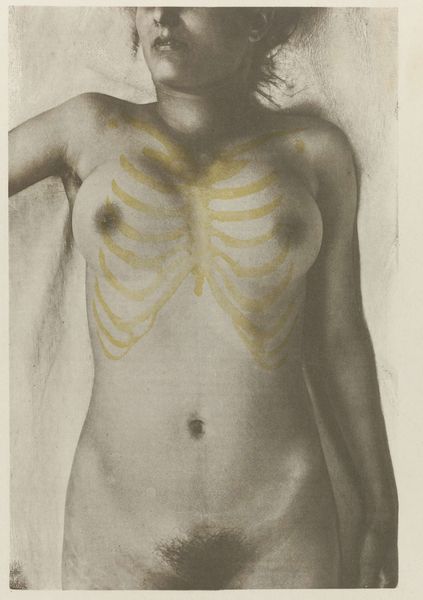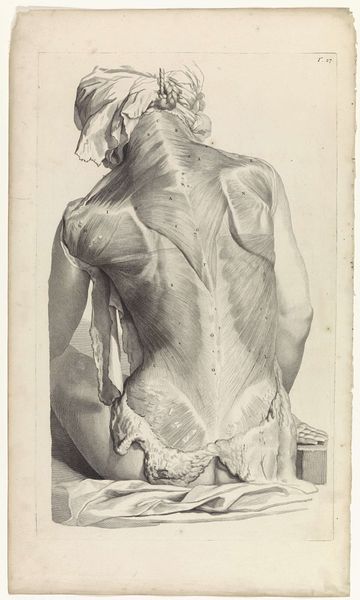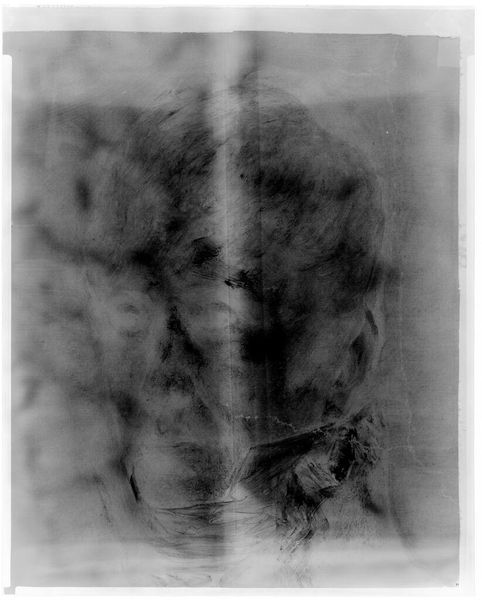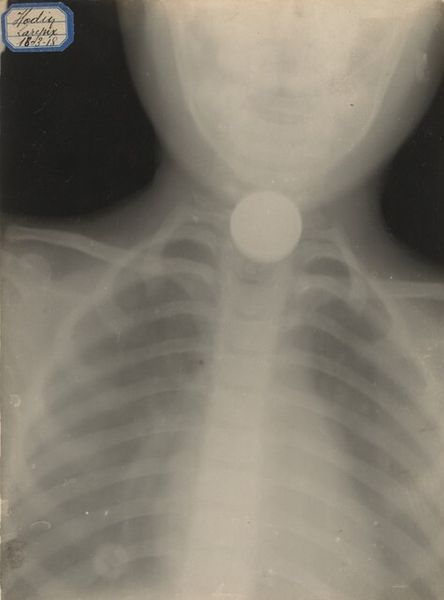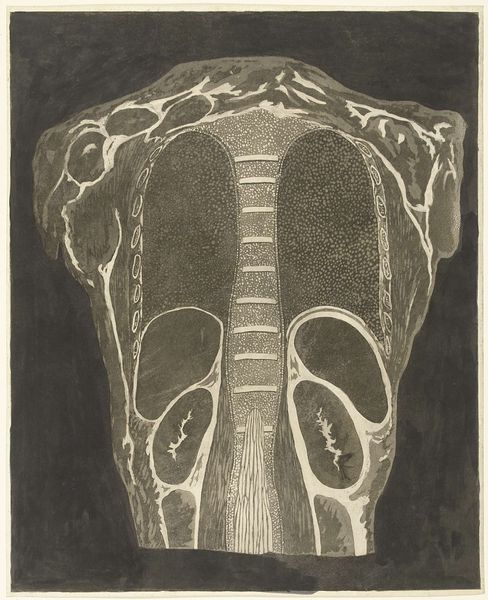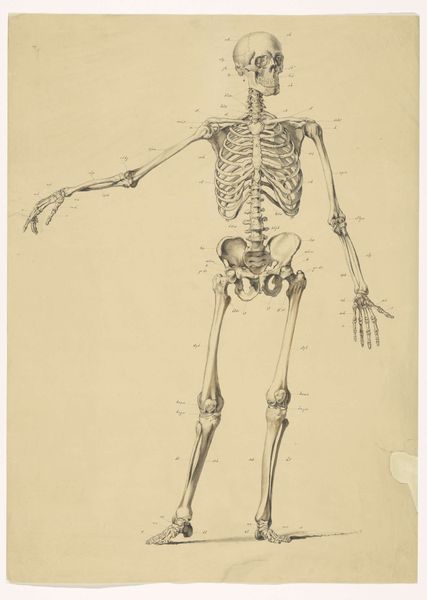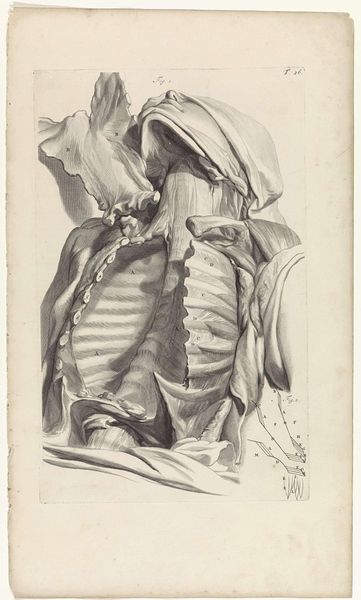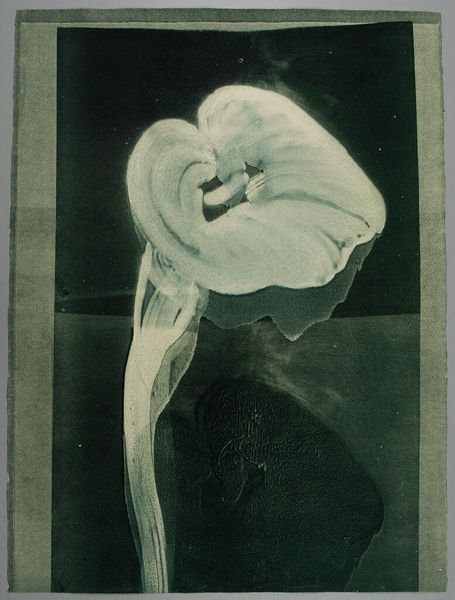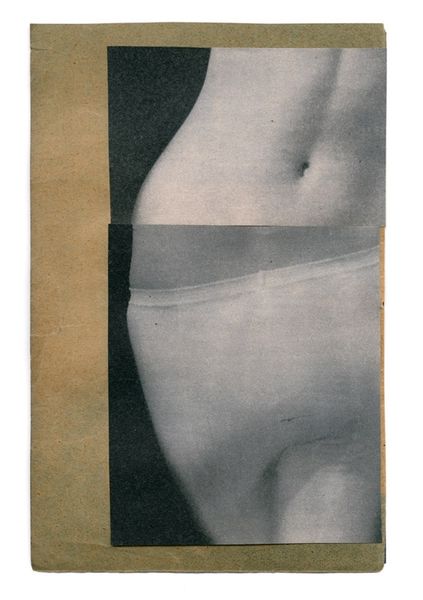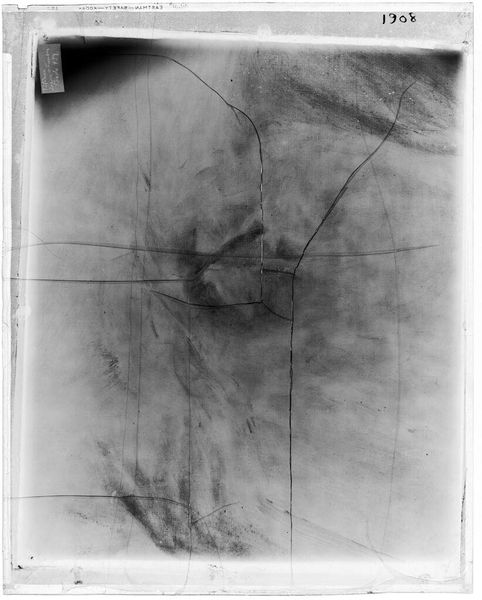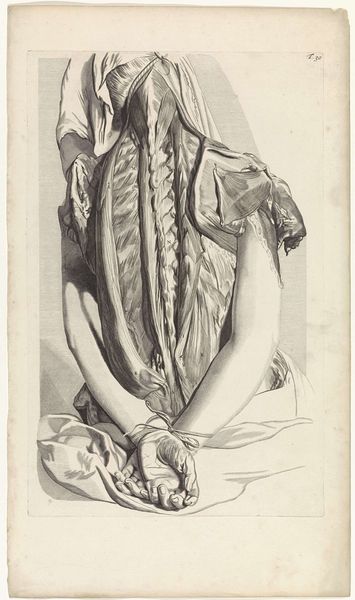
Anatomische foto van een mannelijk lijk: 'de vorm van de borstpartij in relatie tot het skelet' (Die Form der Brust in ihren Beziehungen zum Skelette) 1908
0:00
0:00
photography, gelatin-silver-print
#
portrait
#
photography
#
gelatin-silver-print
#
academic-art
#
nude
#
modernism
Dimensions: height mm, width mm
Copyright: Rijks Museum: Open Domain
Editor: So, here we have Giulio Chiarugi's 1908 gelatin-silver print: "Anatomische foto van een mannelijk lijk: 'de vorm van de borstpartij in relatie tot het skelet'"… or, "Anatomical Photo of a Male Corpse: 'The Form of the Breast in Relation to the Skeleton.'" It’s rather…stark, I must say. A body, chest bare, with the rib cage painted or drawn on. What is your take on this? Curator: Well, what I *see* is, yes, a stark reality softened with… what would you call it, an academic curiosity? Death, anatomy, laid bare - but almost poetically, no? He uses photography, but it reminds me of old anatomical drawings, where science met a certain artistry. Doesn't the bright yellow against the faded grayscale feel... well, jarring, yet purposeful? It makes you think about what's *beneath* the skin. Is it beautiful? Morbid? What do *you* think? Editor: I see what you mean about the older anatomical drawings. I guess that answers my unasked question about art, science and why display such a work at all, other than educational or documentary. The overlay gives it such an illustrative aspect, as well. Did medicine at that time feel similarly, where death held an academic value? Curator: Absolutely. Early 20th century…medicine and art were often intertwined, both searching for a deeper understanding of the human form. I imagine he sees… Truth beneath. It’s unsettling, isn’t it? A frank acceptance. Do you get that same feeling? Almost as if it were normal…natural… Editor: Definitely unsettling but yes, something feels deeply real about its honesty, so perhaps the photograph does exactly what it sets out to do by normalising something generally feared! This feels so distant from our current approach where any such portrayal in a modern context may instead be received with caution, alarm or fear, rather than objective or considered truth! Curator: And see? That’s exactly why it resonates even now, so thank you! Editor: Thank you! That was fascinating.
Comments
No comments
Be the first to comment and join the conversation on the ultimate creative platform.
